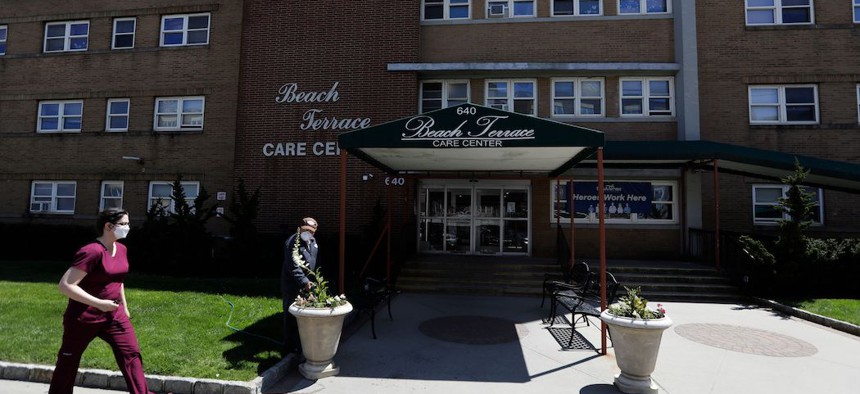Imagine a scenario where a corporate board that was accused of enacting a policy that devastated the company announced that the same five board members who are under fire will be conducting an investigation of their own conduct.
Imagine then that the board issued a report exonerating itself. Hopefully, after the shareholders stopped laughing, they would be aghast that the board would engage in such an obvious conflict of interest.
Yet, this is exactly what transpired in New York when Gov. Andrew Cuomo and hishealth officials “investigated” their own actions on nursing homes during the COVID-19 outbreak. And - surprise, surprise - they cleared themselves of any wrongdoing.
The state Health Department’s March 25directive to nursing homes that they had to take COVID-19 patients returning from the hospital has been widely blamed for contributing to the 6TK deaths from COVID-19 in nursing homes. (The actual toll is believed to be much higher, since the statedoes not record a death as a nursing home-related if the person contracted the virus in the home, yet died in the hospital.)
Cuomo's panel is trying to get the public to believe that these deaths were not the result of Covid patients being shipped into the facilities, but because the nursing home staff brought the virus in.
The report concluded, “Admission policies were not a significant factor in nursing home fatalities. Employee infections were related to the larger community spread and employee transmission has the strongest correlation to nursing home fatalities.”
There are two major flaws in this thinking. First, there’s no way to determine if the worker became infected outside the facility and thereafter infected the patient, or if the worker first became infected from a patient in the facility and then spread it to other patients.
The report states that deaths at the homes were happening prior to the order. Of course, there was community spread earlier in March and some nursing home infections and deaths were inevitable. But, the report also notes that one of four workers were infected. That was twice the believed rate of the population at large, which would suggest that more were getting infected inside the facility – not just bring it in from outside.
Secondly, even if the workers were source zero, wasn’t there a responsibility of our governmental leaders to ensure that the workers were tested vigorously and removed if infected?
The report states, “On March 13, 2020 NYSDOH mandated staff temperature checks at the beginning of each shift, mandated use of face masks by all staff, and cancelled congregate activities within nursing homes.” But they did not require testing until almost two months later, on May 10.
Contrast that to Florida where mobile testing labsstarted conducting 3,500 tests per day at long-term care facilities in mid-April, when there were still only 840 cases in Florida nursing homes. As of mid- May, 50 teams of Florida National Guard medicstested 32,000 residents and staff of long-term care facilities.And, of course, Florida Gov. Ron DeSantis prohibited Florida hospitals from discharging COVID-19 patients to the state’s long-term care facilities.
New York was understandably obsessed about hospital capacity, so they saw nursing homes as an outlet to reduce hospital occupancy. And the Trump administration’sfailure to provide an adequate supply of accurate tests would have impeded any testing requirement in March.
But, given that testing was unavailable and nursing homes are full of elderly and disabled residents in close quarters, perhaps they should have been discharged elsewhere, at least once facilities became available, such as the field hospital that was set up in Central Park by mid-April. And testing in nursing homes should have been dramatically expanded by mid-April, giving priority to residents and workers in those facilities because of the special risks they could pose to vulnerable populations.
Cuomo probably wants to remove the stench that stuck to him as a result of these nursing home deaths. He was riding high in April and May, due to his commanding performances at his daily press conferences. He seemed confident and in control, as contrasted with the president’s childish behavior, and Cuomo’s poll numbers soared to unprecedented heights. But the bloom came off the rose rather quickly, when attention shifted to Cuomo‘s nursing home policy and the large number of deaths emanating from New York nursing homes.
So, the Cuomo administration sought to deflect blame from his administration onto the nursing homes. There’s plenty of blame to go around, but Cuomo shouldn’t be able to avoid his fair share of it.

NEXT STORY: Keep New York’s housing courts closed


